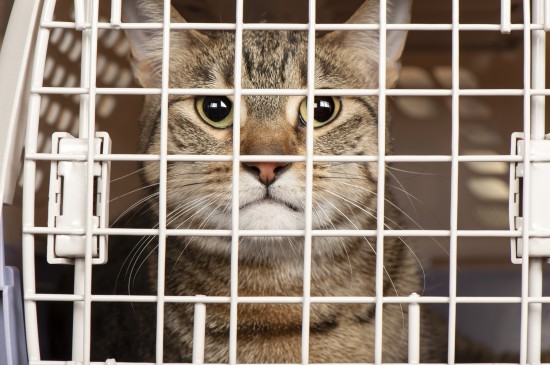
If your pet runs into trouble and has an accident that has compromised its health, you need to stay calm and assess the situation. Panic spreads and animals sense that fearful urgency quickly, so your voice, tone and movements need to stay calm to reassure your companion. After all, a dog doesn't understand what you're saying, but a dog can certainly understand the sound of your voice. While you reassure your pet, find out as much as you can about its injury or poisoning. What happened and how, and if anything was consumed, how much? The more information you can gather will help you apply some first aid techniques before you can take your dog to a veterinarian.
The same rule of staying calm also applies to the dog, and you should make every effort to try and keep the dog calm while you administer first aid; your efforts will hopefully come to having the dog allow you to treat it. The presence of the dog's owner can often be a calming influence in an emergency situation. Acting as if you're calm and collected can also help injured dogs stay calm.
Never assume that your first aid treatment will be enough to get your dog on the road to recovery. While veterinarians can be expensive, a hidden injury or internal bleeding could be even more costly to treat if left untended - your dog could die. Also, the risk of infection for flesh wounds as time passes is very high, and your veterinarian will be able to provide you with antibiotics for your pet. Advise your clinic that you're on your way with a quick phone call and try to get some fast advice for your pet's situation. When you do put your dog in your vehicle, lay it on something flat and stable, so your pet doesn't get bounced around during the car ride.
Early preparation is a godsend, and easier to achieve than you might think. A first aid kit for humans will have more than a few items vital in treating dogs, so keeping a first aid kit in your home helps you, your dog and anyone else you may know that needs emergency care. Knowing when your dog may face a threatening situation can also help. If you're feeling that a situation might be dangerous for your dog, err on the side of caution and prepare for the worst.
When injured, some dogs become violent or aggressive, requiring that they be restrained with a muzzle to keep them from biting others or resisting treatment. Creating a makeshift muzzle is possible using two to three feet (or 60 to 90 centimeters) of strong cloth. Using the cloth, bind the dog's jaws together and then tie it behind the dog's ears. Don't worry; while your dog may protest noisily by snorting and drooling, it can certainly breathe through its nose despite the wrapping. Other restraints should be used more cautiously, and in emergencies, use only restraints that are absolutely necessary.
Your goal, in an emergency situation with your dog, is to keep it comfortable, stable and alive until a professional veterinarian can apply the proper treatment. This may sound simple, but a hurt and frightened animal can turn your beloved pet into a dog that you can barely recognize, making your job more difficult. Researching possible accidents and how to apply first aid is a responsible way to care for your pet and may just one day save its life.
 Getting Your Pet Ready For A Trip To The Vet
Getting Your Pet Ready For A Trip To The Vet
 Love Me, Love My Dog - Introducing A New Partner Into Your Dog’s Home
Love Me, Love My Dog - Introducing A New Partner Into Your Dog’s Home
 12 Large Cat Breeds That Make Lovely Pets
12 Large Cat Breeds That Make Lovely Pets
 Companion Parrots - Gratification Of Living Together
Companion Parrots - Gratification Of Living Together
 Wet Feather In Ducks & Geese Explained
Wet Feather In Ducks & Geese Explained
 How To Stop Your Dog From Destroying Your Furniture When You Are Out
How To Stop Your Dog From Destroying Your Furniture When You Are Out
Copyright © 2005-2016 Pet Information All Rights Reserved
Contact us: www162date@outlook.com